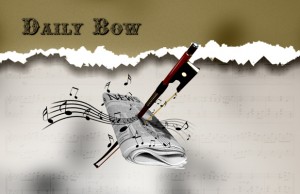 Over the weekend, there was a great story done on a small, local symphony orchestra from the Illinois town of Peoria. The story discussed some of the challenges of running an orchestra and the public-vs-hidden dichotomy between the conductor and the executive director.
Over the weekend, there was a great story done on a small, local symphony orchestra from the Illinois town of Peoria. The story discussed some of the challenges of running an orchestra and the public-vs-hidden dichotomy between the conductor and the executive director.
When you think of a symphony orchestra, you usually think about the woman or man in the podium, waving a stick around, attempting to coax and inspire 90-plus musicians to put their heart and soul into Beethoven, Mozart and Mahler.
But you seldom think of another person with a much less glamorous job who seldom appears on stage: the orchestra’s executive director.
Yet, next to the conductor, it’s hard to think of another single person who is more important to a symphony orchestra’s long-term health and vitality.
That’s why Susan Hoffman, the Peoria Symphony Orchestra’s new executive director, has her hands full. An executive director – especially an executive director at a small symphony like the Peoria Symphony – is responsible for a little bit of everything.
She’s networking with donors and getting to know potential new donors because local generosity and business support (not tax money) is the major source of funding for the symphony. She’s overseeing publicity efforts and making sure the symphony is presenting its best face to the community. She’s working with the board and the symphony’s artistic director and conductor, playing a role in shaping the vision of the organization as a whole.
But Hoffman also faces another challenge, one that’s common to all symphony orchestra’s nationwide: How to renew the classical music audience base, which tends to be heavily weighted towards those 65 and older. Exactly what has to happen to draw younger people – in their 30s, 40s and 50s – to the symphony?
The Peoria Symphony Orchestra may not be “on par” with the heavyweights in San Francisco, New York, London, etc., but we would be amiss to underestimate the caliber of talent in the organization’s management, as well as the level of insight we can glean from this piece.
Read the full story: Symphony’s executive director understands biggest obstacle
Other stories from the week:
- The Classical Revolution is coming to Chicago this week. Here’s a short interview with a classical revolutionary himself – Gino Faraci of Classical Revolution Pittsburgh
- A composer builds bridges between different musical styles – Gabriel Kahane and “Crane Palimpset”
- Meanwhile, a piano duo also bridges the gap between classical and other styles, by turning it upside down
- Finally, with all of the talk of chamber music in light of the Classical Revolution Conference (see above), it’s only fitting that Joshua Bell is leading a new tour with the Academy of St. Martin in the Fields














No comments yet.